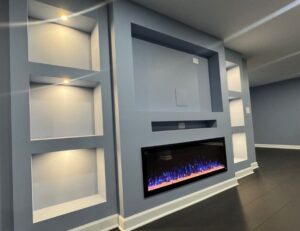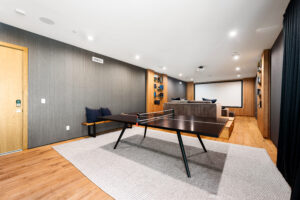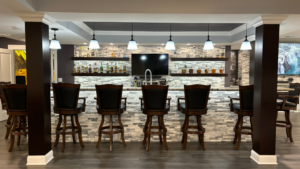Proper ventilation is a crucial aspect of any basement remodeling project. It ensures that the air quality remains high and that your newly finished space remains comfortable and inviting. Without adequate ventilation, you might encounter issues such as excess humidity, mold growth, and poor air quality, all of which can negatively impact both the aesthetics and functionality of your basement. Here’s a detailed look at why ventilation matters and how to effectively incorporate it into your basement remodel.
Why Ventilation is Essential
1. Preventing Moisture Issues
Basements are prone to moisture due to their location below ground. Without proper ventilation, this moisture can lead to mold and mildew growth, which can damage your walls, flooring, and overall structure. Adequate ventilation helps manage moisture levels and prevents these issues from arising.
2. Improving Air Quality
Good ventilation ensures that stale air is exchanged for fresh air, reducing the accumulation of pollutants and improving overall air quality. This is especially important in basements, where air can become stagnant and filled with airborne contaminants.
3. Enhancing Comfort
Proper ventilation helps regulate temperature and humidity levels, making your basement a more comfortable space to live or work in. It can also prevent the room from feeling musty or damp.
Ventilation Solutions for Your Basement Remodel
1. Extending Your Central AC System
If your basement is part of a larger home with an existing central air conditioning system, extending the AC system to include the basement can be an effective way to ensure consistent ventilation and temperature control. This option is beneficial if you have the infrastructure in place and want to maintain a uniform climate throughout your home.
2. Installing a Split System
For basements that are not connected to the central AC system, installing a split system can be a great alternative. A split system includes an indoor unit and an outdoor compressor, allowing you to control the temperature and ventilation of your basement independently. This option is ideal for homes without existing ductwork or when you need a dedicated climate control solution.
3. Adding Egress Windows
Egress windows are a key feature in basement remodeling, particularly if you plan to use the space as a bedroom or living area. They provide natural light, allow for emergency exits, and contribute to better air circulation. Installing egress windows can enhance both the safety and comfort of your basement.
4. Incorporating Standard Windows
Even if egress windows are not required, adding standard windows can improve ventilation and natural light. They help in reducing humidity and allow fresh air to enter the space, contributing to better overall air quality.
5. Installing Proper Doors
The choice of doors for entryways in your basement can also impact ventilation. Consider installing doors that allow for airflow, such as doors with vents or louvered designs. This helps in maintaining a steady exchange of air between your basement and the rest of your home.
6. Wheelchair-Friendly Access
If your remodel includes making the basement accessible for wheelchair users, ensure that ventilation systems and entry points accommodate this need. This might include installing ramps, wider doors, and ensuring that ventilation systems are accessible and easy to use.
Call Basement 2 Finish Today!
For expert assistance with your basement remodel and ventilation solutions, contact Basement 2 Finish. We specialize in creating well-ventilated, comfortable basements that are tailored to your needs. Reach out to us to learn more about our comprehensive remodeling services and how we can help you achieve the perfect basement transformation.













